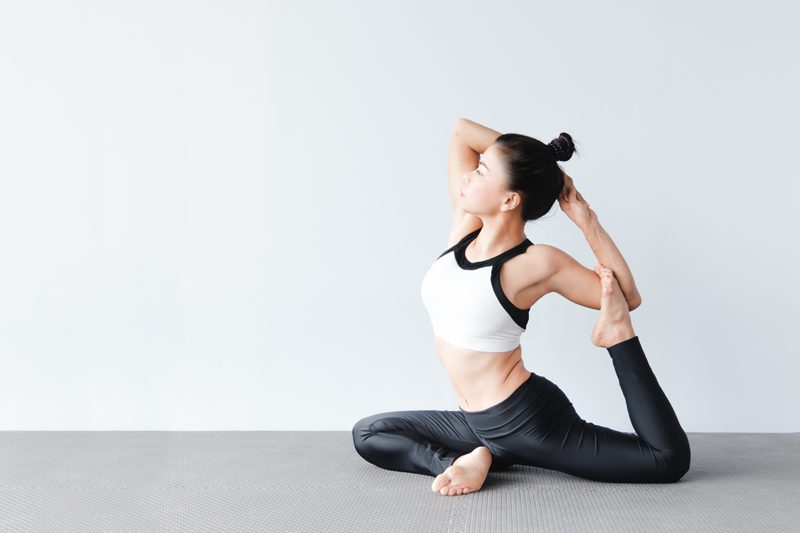While some yoga styles are practised purely for exercise, others focus on the emotional and spiritual body instead of the physical one. Raja yoga is designed to benefit both but focuses primarily on emotional and spiritual development. According to the progenitor of Raja Yoga, Patanjali, the goal of the practice is to unite practitioners with the higher self. When translated, the word ‘Raja’ means ‘King’ and the word ‘Yoga’ means ‘connection’ or ‘union’. Because of this, Raja is often referred to as ‘Royal Yoga’. First practised in 300 BC, the style was used by a number of different kings. In fact, eleventh century King, Bhoja, wrote an influential and informative book on the practice. It is believed that this text contributed to the rise in Raja’s popularity. Unlike traditional Hatha, Raja is rarely practised in the West. Finding a Raja class can be difficult, so some yogis choose to practice the style from their own home, instead. If you’re interested in learning the technique, put on your yoga leggings and keep reading!
The Eight Limbs of Yoga
Raja Yoga is based on the ‘Eight Limbs of Yoga’. Created by Patanjali, the Eight Limbs can be used together to form a path to self-mastery. When used correctly, the limbs are said to create ‘Samadhi’ – the Sanskrit word for ‘Harmony’. Unlike Hatha, Raja focuses on meditation and breathing techniques instead of physical postures. Below, we explore the Eight Limbs further.
1 and 2. Yama and Niyama
The first limbs are Yama and Niyama. These are often seen as the main commandments of Raja. When translated from Sanskrit, the word ‘Yama’ means ‘control’ and ‘Niyama’ means ‘non-control’. Essentially, Yama and Niyama are the do’s and don’ts of the style. Yama teaches us to abstain from stealing, violence, greed, dishonesty, and sexual misbehaviour. Niyama encourages cleanliness, contentment, self-examination, and dedication to the higher self.
3. Asana
The word ‘Asana’ translates to ‘posture’. Some styles believe this is an instruction to practice physical postures, but Raja interprets the word a little differently. In Raja, ‘Asana’ is interpreted as any still posture used to facilitate meditation.
4. Pranayama
From Sanskrit, Pranayama translates to ‘breath’ or ‘life energy’. In Raja, Pranayama teaches yogis how to control their physical and spiritual energy. Many practitioners think of Pranayama as the state in which energy is reversed. Rather than flowing out of the body, Raja encourages energy to travel inwards toward the higher self.
5. Pratyahara
This limb focusses on concentration. In Raja, practitioners learn how to use their spiritual energy once it has been reversed.
6. Dharana
Dharana is all about the balance of inner awareness. Until practitioners have achieved Dharana, their inner awareness is thought to be unstable.
7. Dhyana
Dhyana concentrates on absorption. Raja teaches students that meditating regularly will allow them to absorb the qualities of meditation. When students have achieved Dhyana, they will be able to meditate freely without having to concentrate.
8. Samadhi
The final limb is Samadhi. From Sanskrit, this limb translates to ‘oneness’. Samadhi can be achieved by dispersing our ego into our inner awareness. According to yogic texts, when Samadhi is achieved we are ready to unite with the higher self.
Benefits of Raja
Like any form of yoga, Raja provides a number of benefits. When used regularly, the style can heal both the physical and emotional body. Below, we explore some of the most popular benefits in more detail.
Relieves Stress and Anxiety
Using the practice regularly can help to relieve stress and anxiety. While some styles achieve this through breathing techniques, Raja uses meditation, also. By doing this, yogis can keep their mind in a state of permanent calmness. Unlike physical postures, meditation can be practised anywhere – even when you’re out and about. If you’re feeling stressed or anxious, take a few minutes to practice internal meditation. Before long, you should feel the tension melt away and your nerves begin to calm.
Improves Relationships
Raja can also be used to improve personal relationships. This is made possible through the two main aspects of Raja. The first step is to remember that everyone is a child of God. As the soul has no religion attached to it, everybody is equal. The second step is to remember that everybody has weaknesses, and that’s perfectly normal. By treating everyone with equal respect and overlooking weaknesses, we can start to improve our personal relationships.
Improves Memory and Concentration
The style can also be used to improve the memory and concentration. According to recent studies, the most effective way to improve these areas is to stay in the present. Thankfully, Raja teaches us to do this using a range of meditation techniques.
Improves Quality of Sleep
To keep your body in optimal condition, it’s essential to get enough sleep. One of the leading causes of insomnia is stress and anxiety. As Raja helps us to relieve this, it can promote a state of calmness that encourages a deeper sleep. With this in mind, practising Raja regularly can drastically improve insomnia and restless sleeping.
In Summary
Whether you’re an experienced yogi or you’re just starting out, Raja Yoga can improve your physical and emotional health. While finding a Raja class may prove difficult, the technique can still be practised independently. This way, you don’t even need to leave the house! With a range of online classes and books available, the basics of Raja Yoga can be learnt with ease. Before getting started, you’ll need to pick up some comfortable clothing and a supportive yoga bra. Opting for clothing with breathable material will allow the body to oxygenate sufficiently. This means that you’ll reap the maximum benefit from each session.

